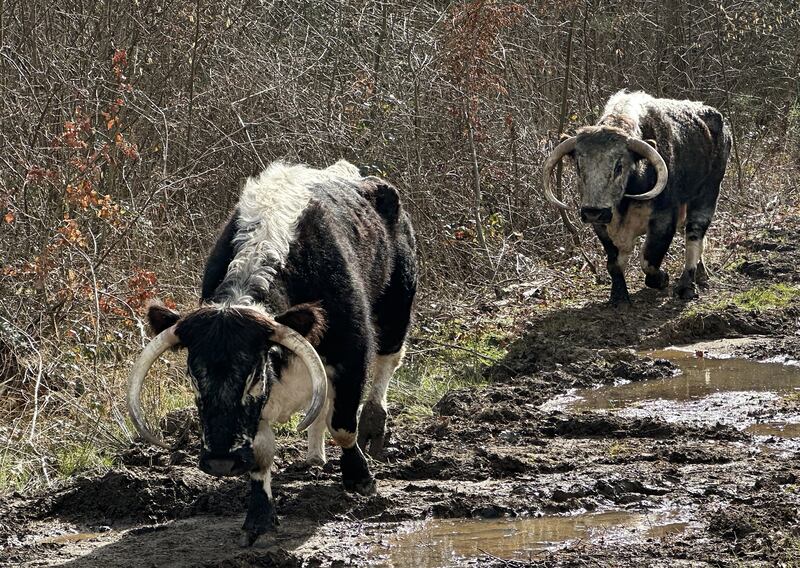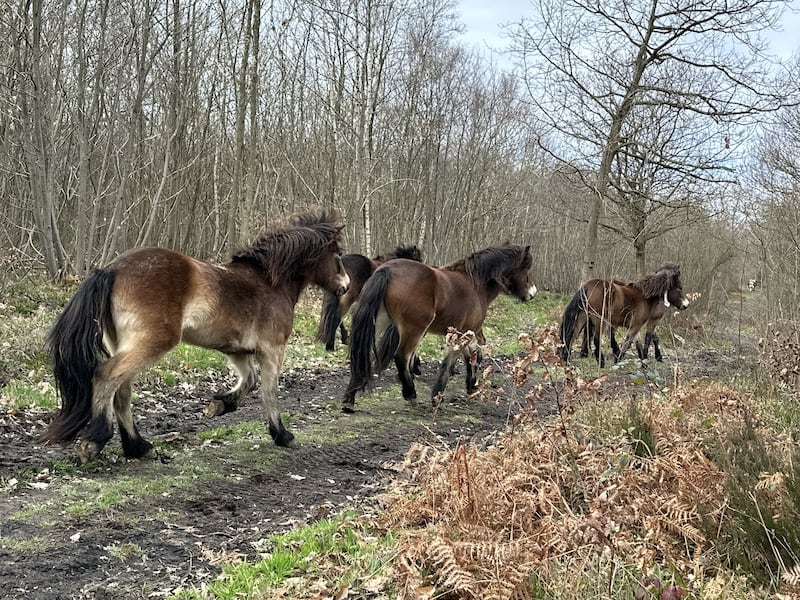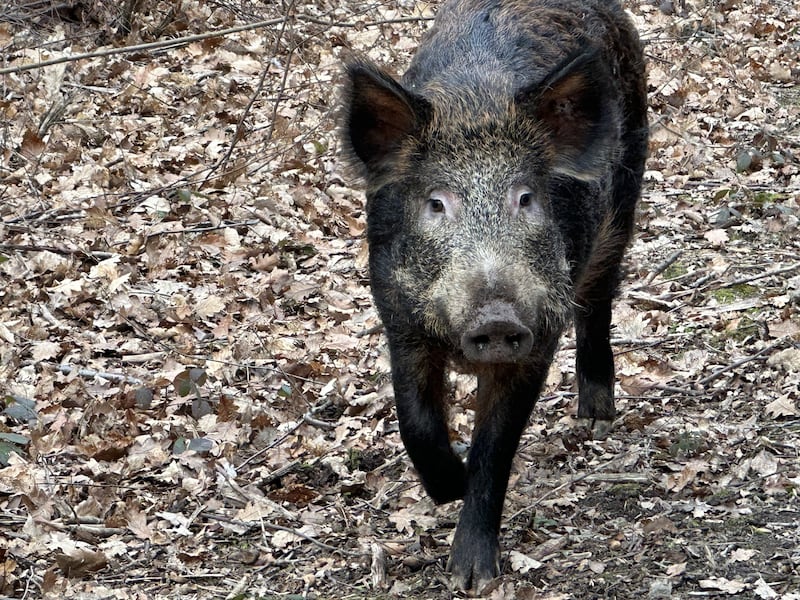A bison rewilding project has welcomed a new cohort of grazing animals which ecologists say will help shape the landscape and improve biodiversity.
Longhorn cattle, iron-age pigs and Exmoor ponies have joined the bison herd at the Wilder Blean Project in Kent ahead of World Rewilding Day on March 20.
Called conservation grazers, the animals have been introduced as a way to naturally manage the woodland and are expected to help clear space for plant species as they forage for food.
It follows the reintroduction of three female bison last July into the woodland north of Canterbury, followed by a bull imported from Germany and the first calf to be born in the UK in thousands of years.

Kent Wildlife Trust and Wildwood Trust, which jointly run the project, said the bison immediately began to improve the habitat upon their arrival by debarking trees and creating deadwood, which makes homes for bats and invertebrates.
They also create corridors through the woodland by treading down bracken and eating brambles and have been seen dust-bathing, which makes sandpits loved by burrowing insects.
Area manager Alison Ruyter said: “Wilder grazing is about using native wild breeds of livestock to mimic the things that mega-herbivores would have done in the past when wild horses, aurochs and bison roamed around the country.
“They were inextricably linked with their habitats and we want to mimic that using the animals available to us now.”
The public will be able to walk among the grazing cattle and ponies but the bison will remain fenced off because of legislative requirements, the project leaders said.

Three ponies and four longhorn cattle will be roaming free in one part of the woodland, whereas the bison and three other ponies will be in a second area.
The four iron-age pigs will roam between the two areas while traditional woodland management will continue in a third part of the forest.
There are plans, pending council approval, to build bison tunnels, which would allow the horned herbivores to move more freely around the woodland while offering a vantage point to visitors.
Mark Habben of the Wildwood Trust said: “We had to jump over a huge number of hurdles to source the bison and get them over here.
“Now they’re settled and in their herd, it’s great to see them being joined by all the other species roaming through the forest doing their important work.

“It’s a really exciting stage for this innovative project. There’ll be lots of research and observations in the coming years and we’ll be looking at how their behaviours compare and the impact they have on the environment.”
The grazers will be monitored for their effect on the environment, with the woodland managers collecting data on soil, insect numbers and vegetation structure.
They are expected to boost biodiversity and bioabundance and the monitoring programme will provide scientific evidence for the value of nature-based solutions, the project managers said.
Kora Kunzmann of Kent Wildlife Trust said: “The most exciting part of what must be one of the UK’s largest ecological monitoring programmes is that it’s an experimental approach.
“Not only will we be able to evidence what changes over time and how it changes, but we will also be able to compare the impact of the bison’s unique behaviour and ecology to that of a similarly large herbivore and to an area that has no grazing impact whatsoever.”







